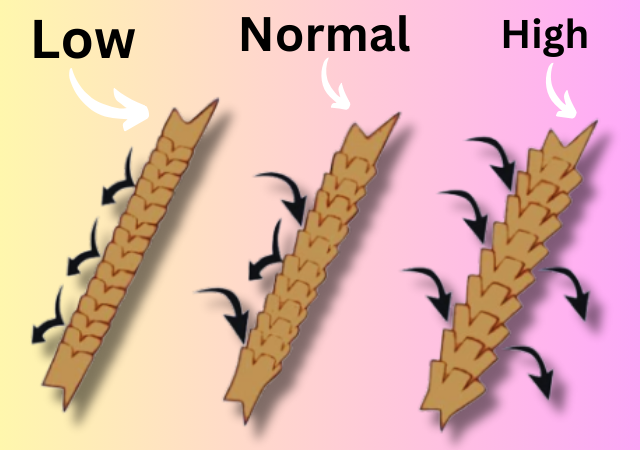What is Hair Porosity and Why Does it Matter?
Introduction
Your hair is more than just a style statement; it’s a reflection of your overall health and well-being. While you may pamper it with shampoos, conditioners, and various treatments, do you really know your hair’s unique needs? One fundamental aspect of hair care that often goes overlooked is hair porosity.
Hair porosity is the measure of your hair’s ability to absorb and retain moisture, and it plays a pivotal role in determining how your hair looks and feels. Whether you’re dealing with frizz, dryness, or an inability to maintain your desired style, understanding hair porosity is the key to unlocking healthier, more manageable locks.
In this article, we will delve into the intricacies of hair porosity, exploring the different porosity types, their characteristics, and why knowing your hair’s porosity level is essential for a successful hair care routine. So, if you’re ready to take your hair care knowledge to the next level and achieve hair that’s not just stunning but also healthier, read on to discover the world of hair porosity.
Hair Structure 101

Before we delve into the world of hair porosity, let’s first understand the basics of hair structure. Your hair isn’t just a single, solid strand; it’s a complex structure composed of layers. At its core is the medulla, which is surrounded by the cortex, the primary structural layer responsible for your hair’s strength, color, and texture. Finally, the outermost layer is the cuticle, a protective shield made up of tiny overlapping scales.
Defining Hair Porosity
Hair porosity is a term used to describe your hair’s ability to absorb and retain moisture. It’s a critical aspect of hair health because it directly affects how your hair looks and feels. Depending on the porosity of your hair, you may experience dryness, frizz, or difficulty maintaining your preferred hairstyle.
There are three primary levels of hair porosity:

1. Low Porosity Hair:
- Characteristics: Low porosity hair has a tightly bound cuticle layer, making it resistant to moisture absorption.
- Challenges: Products may sit on the hair’s surface, leading to product buildup and difficulty in moisturizing.
- Tips: Use lightweight, liquid-based products and incorporate heat when deep conditioning to open the cuticle.
2. Normal Porosity Hair:
- Characteristics: Normal porosity hair has a balanced cuticle layer, allowing it to absorb and retain moisture adequately.
- Advantages: This type of hair typically has a healthy shine and is more manageable.
- Maintenance: Use a variety of products suitable for your hair type, and maintain a regular hair care routine.
3. High Porosity Hair:
- Characteristics: High porosity hair has a cuticle layer with gaps and holes, making it highly absorbent but prone to losing moisture quickly.
- Causes: Chemical treatments, excessive heat, or genetics can lead to high porosity hair.
- Strategies: Focus on deep conditioning, using leave-in treatments, and protecting your hair from environmental factors.
Why Knowing Your Hair Porosity Matters

Understanding your hair’s porosity level is not just a matter of curiosity; it’s essential for maintaining healthy and beautiful locks. Here’s why it matters:
1. Tailored Hair Care:
Knowing your hair porosity allows you to select the right products and techniques for your specific needs. This means you can avoid using products that might worsen your hair issues and opt for those that will truly benefit you.
2. Preventing Damage:
Using the wrong products or applying heat excessively can lead to damage and breakage. By aligning your hair care routine with your porosity level, you minimize the risk of harming your hair.
3. Effective Moisturizing:
If you have low porosity hair, you’ll know to use products that can penetrate your hair’s surface. For high porosity hair, you’ll understand the importance of sealing in moisture to prevent it from escaping.
4. Time and Money Savings:
When you tailor your hair care routine to your hair’s porosity, you save both time and money by avoiding trial and error with countless products that may not work for your unique needs.
Determining Your Hair Porosity

Now that you understand why hair porosity is crucial, you’re probably wondering how to determine your hair’s porosity level. Fortunately, there are several methods to help you figure it out:
1. The Strand Test:

Take a strand of clean hair and place it in a glass of water. Observe whether it sinks (high porosity), floats (low porosity), or hovers in the middle (normal porosity).
2. The Slip ‘n’ Slide Test:
Gently slide your fingers up a strand of hair from the tip to the root. If you feel bumps along the way, your cuticle is lifted (indicating high porosity). If it feels smooth, your cuticle is tightly bound (low porosity).
3. The Product Absorption Test:
Apply a small amount of water or a leave-in conditioner to a section of your hair. If it quickly absorbs the product, your hair may have high porosity. If it takes a while or doesn’t absorb at all, it may be low porosity.
Tailoring Your Hair Care Routine

Once you’ve determined your hair porosity, it’s time to tailor your hair care routine accordingly:
– Low Porosity:
Opt for lightweight, liquid-based products. Use heat during deep conditioning to help products penetrate your hair shaft.
– Normal Porosity:
Enjoy the flexibility of using a wide range of products. Maintain a consistent hair care routine to keep your hair healthy.
– High Porosity:
Focus on deep conditioning and sealing in moisture with heavier products. Be vigilant about protecting your hair from environmental factors.
Additional Tips for Healthy Hair

Regardless of your hair’s porosity, there are universal hair care practices that can promote overall hair health:
– A Balanced Diet:
Proper nutrition, including vitamins and minerals, contributes to healthy hair growth.
– Hydration:
Drink plenty of water to keep your hair and scalp hydrated from the inside out.
– Protect Your Hair:
Use heat protectants before styling with hot tools, and avoid excessive exposure to the sun and harsh weather conditions.
Conclusion
In conclusion, understanding your hair’s porosity is a fundamental step towards achieving hair that not only looks stunning but is also healthy and manageable. Your hair’s porosity level dictates its ability to absorb and retain moisture, which in turn affects its overall condition. By identifying whether you have low, normal, or high porosity hair, you can tailor your hair care routine to suit your unique needs.
This knowledge empowers you to choose the right products and techniques, preventing damage, and maximizing the effectiveness of your moisturizing efforts. Determining your hair’s porosity is relatively simple through tests like the strand test, slip ‘n’ slide test, or product absorption test, allowing you to make informed decisions about your hair care.
Incorporate these insights into your routine, along with balanced nutrition, hydration, and protective measures, to nurture your hair from the inside out. With the right approach, you’ll not only enhance the beauty of your locks but also ensure their long-term health, saving both time and money in the process. So, embrace the world of hair porosity, and let your hair shine with newfound vitality.

My name is Rohit Vagh and I’m a content writer specializing in fashion and lifestyle. I have three years of experience in this field and have written various articles. My writing style is creative and engaging, and I strive to create content that resonates with my readers. I have a deep passion for fashion and am constantly researching the latest trends and styles to make sure my readers are up to date. I’m excited to continue my career in blogging, and I’m always looking for new opportunities in the fashion and lifestyle space.





